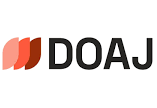About the journal
![]()
|
Advances in Mathematical Finance and Applications under printed licence number 2538-5569 and online licence number 2645-4610, dated 26/5/12, portal of scientific publications of the Ministery of Science, Research and Technology to the address: https://journals.msrt.ir/Home/Detail/10245 has recieved the scientific grade (former Scientific Research) and in evaluation of dated 2022 the quarterly obtained the (A) grade. According to the executive instructions of the financial support of Islamic Azad University scientific journals(10/62815-2019), in case of initial approval by the editor, for sending each article for judging, the amount of 1/000/000 Rials and after the final approval, the amount of 3/000/000 Rials will be recieved from the esteemed authors for publication of the article. It should be noted that if the article be rejected by the esteemed judges, the initial payment cannot be returned to the author. For foreigners the article processing charges is 50$ for final approval step. |
|
|
|
The Journal of Advances in Mathematical Finance and Applications has signed a memorandum of understanding with the Iranian Financial Engineering Association |
 |
Advances in Mathematical Finance and Applications (AMFA) provides and immediate open access to its content on the principle that making research freely available to the public supports a greater global exchange of knowledge. The journal is owned by Islamic Azad University, Arak Branch (IAU-AB). |
 |
COPE-The Committee of Publication Ethics (Registered) |

|
All submitted manuscripts are checked for similarity through iThenticate software to ensure their authenticity and originality and then rigorously peer-reviewed by the expert reviewers. |
 |
© 2019 "Advances in Mathematical Finance and Applications" allows reuse and remixing of its content, in accordance with a CC-BY license and is distributed under a Creative Commons Attribution (CC-BY) 4.0 license |
 |
ISC Quartile 2022 = 1.031 (Q1) |
-
Open Access Article
1 - Managerial Overconfidence and Tone of Management Reports
Kefsan Mansouri Abbas Aflatooni Hassan ZalaghiIssue 4 , Vol. 9 , Autumn 2024The purpose of this study was to investigate the effect of managerial overconfidence as a behavioral bias on the tone of management reports, including directors’ report and management discussion and analysis (MD&A). In this research, the frequency of technical words was MoreThe purpose of this study was to investigate the effect of managerial overconfidence as a behavioral bias on the tone of management reports, including directors’ report and management discussion and analysis (MD&A). In this research, the frequency of technical words was used to measure the tone of the management report, and overinvestment was used as a proxy for managerial overconfidence. The hypotheses were tested on 134 companies over a 4-year period from 2017 to 2020, using multivariate regression models in STATA. The results show that managerial overconfidence is not significantly associated with the positive tone of management reports, but is positively associated with the negative tone of these reports. The results suggest that, due to the uncertainties and risks in the economic environment of Iran and their escalation within the time frame of the present research, overconfident managers tend to use a more negative tone when reporting on risks and uncertainties to avoid the negative consequences of overstatement. Manuscript profile -
Open Access Article
2 - An Uncertain Renewal Stock Model for Barrier Options Pricing with Floating Interest Rate
Behzad Abbasi Kazem NouriIssue 4 , Vol. 9 , Autumn 2024Option pricing is a main topic in contemporary financial theories, captivating the attention of numerous financial analysts and economists. Barrier option, classified as an exotic option, derives its value from the behavior of an underlying asset. The outcome of this o MoreOption pricing is a main topic in contemporary financial theories, captivating the attention of numerous financial analysts and economists. Barrier option, classified as an exotic option, derives its value from the behavior of an underlying asset. The outcome of this option is based on whether or not the price of the underlying asset has reached a predetermined barrier level. Over the years, the stock price has been represented through continuous stochastic processes, with the prominent one being the Brownian motion process. Correspondingly, the widely used Black-Scholes model has been employed. Nevertheless, it has become evident that utilizing stochastic differential equations to characterize the stock price process is unsuitable and leads to a perplexing paradox. As a result, many researchers have turned to incorporating fuzzy or uncertain environments in such situations. This study presents a methodology for pricing barrier options on stocks in an uncertain environment, in which the interarrival times are uncertain variables. The approach employs the Liu process and renewal uncertain process, considering the interest rate as dynamic and floating. The pricing formulas for knock-in barrier options are derived using α-paths of uncertain differential equations with jumps. Manuscript profile -
Open Access Article
3 - Analyzing the Effect of Monetary Volatility on the Iranian Stock Market
Nafiseh Vatanchi MirFaiz Falah Shams Lialestani Gholamreza ZomorodianIssue 4 , Vol. 9 , Autumn 2024Nowadays, financial markets and especially the stock market are important and undeniable sources of financing for investment toward the economic growth and development of countries. These markets also have a tangible role as a basis for implementing monetary policy. Thi MoreNowadays, financial markets and especially the stock market are important and undeniable sources of financing for investment toward the economic growth and development of countries. These markets also have a tangible role as a basis for implementing monetary policy. This study aims to investigate the effect of monetary volatility on the seasonal performance of the Iranian stock market from April 2001 to March 2021.The TEDPIX index of the Tehran Stock Exchange was used for designing and explaining the research model for measuring monetary policy uncertainty in terms of the debt of banks to the Central Bank and to measure the Iranian stock market’s performance. With portfolio theory as the theoretical basis for the study, the housing price index and the exchange rate were added to the research model as other independent variables due to their importance to the portfolio of individuals. In this regard, monetary policy uncertainty was first calculated using the exponential general autoregressive conditional heteroskedastic (EGARCH) method. Then, the effect of uncertainty on the TEDPIX index was calculated using the vector auto regression (VAR) statistical method in EVIEWS 12. The findings indicate a significant negative correlation between monetary policy uncertainty and short and long term TEDPIX index. Moreover, exchange rate and housing price index has a significant positive effect on the TEDPIX index. Manuscript profile -
Open Access Article
4 - Stock Price Drift from the Content of Projected Earnings Information Resulting from Quarterly Operations: Evidence of the Contradiction Between Timeliness and Profitability
Saeed Safari Bideskan Alireza Mehrazeen Abolghasem Masih AbadiIssue 4 , Vol. 9 , Autumn 2024Financial statements should have general objectives rather than specific group interests. The possibility of forecasting earnings based on seasonal performance instead of the previous year's earnings and in terms of the contradiction between timeliness and the ability t MoreFinancial statements should have general objectives rather than specific group interests. The possibility of forecasting earnings based on seasonal performance instead of the previous year's earnings and in terms of the contradiction between timeliness and the ability to verify earnings can be a new and thought-provoking issue. The present study examines stock price drift from the content of projected earnings forecast for quarterly operations. The research hypotheses were tested through univariate regression, multivariate regression and correlation coefficient tests using Eviews software. Findings of this study indicate that 1- Profit forecast based on quarterly performance has more verifiability than the previous year (profit stability). 2- The Verifiability of the year profit is more than the profit forecast based on the 9-month performance. 3- Stock price drift is expected on the day after the announcement of earnings and there are changes in earnings compared to the forecast of the previous season. 4- No relationship was observed between the volumes of shares traded the next day and the announcement of the forecasted profit and the changes in the profit compared to the forecast of the previous season. Manuscript profile -
Open Access Article
5 - Investigating Randomness By Walsh-Hadamard Transform in Financial Series
Seyed Jalal TabatabaeiIssue 4 , Vol. 9 , Autumn 2024The objective of the ongoing research is to introduce the initial, substantial, and practical implementation of the Walsh-Hadamard Transform in the realm of quantitative finance. It is worth noting that this particular tool, which has limited utility in the domain of di MoreThe objective of the ongoing research is to introduce the initial, substantial, and practical implementation of the Walsh-Hadamard Transform in the realm of quantitative finance. It is worth noting that this particular tool, which has limited utility in the domain of digital signal processing, has demonstrated its effectiveness in evaluating the statistical significance of any binary sequence. Therefore, employing this approach in financial series would be exceptionally noteworthy. By employing five primary tests to assess the randomness of the series, including those pertaining to the Tehran Stock Exchange, as well as copper and gold, the outcomes reveal the presence of randomness in the transformed series in all aspects. Naturally, this random-ness could be examined to identify any underlying trends. Manuscript profile
-
Open Access Article
1 - Using MODEA and MODM with Different Risk Measures for Portfolio Optimization
Sarah Navidi Mohsen Rostamy-Malkhalifeh Shokoofeh BanihashemiIssue 1 , Vol. 5 , Winter 2020The purpose of this study is to develop portfolio optimization and assets allocation using our proposed models. The study is based on a non-parametric efficiency analysis tool, namely Data Envelopment Analysis (DEA). Conventional DEA models assume non-negative data for MoreThe purpose of this study is to develop portfolio optimization and assets allocation using our proposed models. The study is based on a non-parametric efficiency analysis tool, namely Data Envelopment Analysis (DEA). Conventional DEA models assume non-negative data for inputs and outputs. However, many of these data take the negative value, therefore we propose the MeanSharp-βRisk (MShβR) model and the Multi-Objective MeanSharp-βRisk (MOMShβR) model base on Range Directional Measure (RDM) that can take positive and negative values. We utilize different risk measures in these models consist of variance, semivariance, Value at Risk (VaR) and Conditional Value at Risk (CVaR) to find the best one as input. After using our proposed models, the efficient stock companies will be selected for making the portfolio. Then, by using Multi-Objective Decision Making (MODM) model we specified the capital allocation to the stock companies that selected for the portfolio. Finally, a numerical example of the Iranian stock companies is presented to demonstrate the usefulness and effectiveness of our models, and compare different risk measures together in our models and allocate assets. Manuscript profile -
Open Access Article
2 - Overview of Portfolio Optimization Models
Majid ZanjirdarIssue 4 , Vol. 5 , Autumn 2020Finding the best way to optimize the portfolio after Markowitz's 1952 article has always been and will continue to be one of the concerns of activists in the investment management industry. Researchers have come up with different solutions to overcome this problem. The MoreFinding the best way to optimize the portfolio after Markowitz's 1952 article has always been and will continue to be one of the concerns of activists in the investment management industry. Researchers have come up with different solutions to overcome this problem. The introduction of mathematical models and meta-heuristic models is one of the activities that has influenced portfolio optimization in recent decades. Along with the growing use of portfolios and despite its rich literature, there are still many unanswered issues and questions in this area. Also, Iranian capital markets, as emerging markets, require native research to answer these questions and issues. The purpose of this study is to provide a useful and effective tool to assist professionals and researchers in portfolio selection theory. This study, while comprehensively reviewing the literature on the subject and the developments and expansions made in the area of portfolio selection and optimization, reviews the types of problems and optimization methods. Manuscript profile -
Open Access Article
3 - Improving Stock Return Forecasting by Deep Learning Algorithm
Zahra Farshadfar Marcel ProkopczukIssue 3 , Vol. 4 , Summer 2019Improving return forecasting is very important for both investors and researchers in financial markets. In this study we try to aim this object by two new methods. First, instead of using traditional variable, gold prices have been used as predictor and compare the resu MoreImproving return forecasting is very important for both investors and researchers in financial markets. In this study we try to aim this object by two new methods. First, instead of using traditional variable, gold prices have been used as predictor and compare the results with Goyal's variables. Second, unlike previous researches new machine learning algorithm called Deep learning (DP) has been used to improve return forecasting and then compare the results with historical average methods as bench mark model and use Diebold and Mariano’s and West’s statistic (DMW) for statistical evaluation. Results indicate that the applied DP model has higher accuracy compared to historical average model. It also indicates that out of sample prediction improvement does not always depend on high input variables numbers. On the other hand when using gold price as input variables, it is possible to improve this forecasting capability. Result also indicate that gold price has better accuracy than Goyal's variable to predicting out of sample return. Manuscript profile -
Open Access Article
4 - Behavioral Finance Models and Behavioral Biases in Stock Price Forecasting
Nader Rezaei Zahra ElmiIssue 4 , Vol. 3 , Autumn 2018Stock market is affected by news and information. If the stock market is not efficient, the reaction of stock price to news and information will place the stock market in overreaction and under-reaction states. Many models have been already presented by using different MoreStock market is affected by news and information. If the stock market is not efficient, the reaction of stock price to news and information will place the stock market in overreaction and under-reaction states. Many models have been already presented by using different tools and techniques to forecast the stock market behavior. In this study, the reaction of stock price in the stock market was modeled by the behavioral finance approach. The population of this study included the companies listed on the Tehran Stock Exchange. In order to forecast the stock price, the final price data of the end December, March, June, and September 2006-2015 and the stock prices of 2014 and 2015 were analyzed as the sample. In this study, Bayes' rule was used to estimate the probability of the model change. Through this rule, the probability of an event can be calculated by conditioning the occurrence or lack of occurrence of another event. The results of model estimation showed that there is the probability of being placed in high-fluctuated regimes (overreaction) and low- fluctuated (under-reaction of stock price despite the shocks entered to the stock market. In modelling with the 4-month final prices, it was proved that the real stock price had no difference from the market price. Manuscript profile -
Open Access Article
5 - DEA Approaches for Financial Evaluation - A Literature Review
Mohammad IzadikhahIssue 1 , Vol. 7 , Winter 2022Financial assessment has been of great interest to both academic and practitioners in the past decades. Among several performance assessment approaches, Data Envelopment Analysis (DEA) has become one of the crucial tools that have been commonly adopted to financially ev MoreFinancial assessment has been of great interest to both academic and practitioners in the past decades. Among several performance assessment approaches, Data Envelopment Analysis (DEA) has become one of the crucial tools that have been commonly adopted to financially evaluate firms in various fields. The main aim of this review article is to review of DEA models in regarding to evaluation of the financial performance. This paper presents the first comprehensive and structured literature review of the use of DEA models for financially assessment. To this end, this paper reviewed and summarized the different models of DEA models that have been applied around the world to development of financial assessment problems. Consequently, a review of 455 published scholarly papers appearing in 160 journals between 1994 and 2021 have been obtained to achieve a comprehensive review of DEA application in financial efficiency. Accordingly, the selected articles have been categorized based on year of publication, authors, nationalities, scope of study, time duration, application area, study purpose, results, outcomes, etc. The discussion and the findings of this paper can be used as a guideline to analysts to determine the best fit financial assessment method when DEA evaluation is applied to any dataset. Future perspectives and challenges are discussed. Manuscript profile -
Open Access Article
6 - Presenting a New Bankruptcy Prediction Model Based on Adjusted Financial Ratios According to the General Price Index
Naimeh Jebelli Iman Dadashi Mohammad Javad Zare BahnamiriIssue 4 , Vol. 6 , Autumn 2021In a volatile economic environment, financial decision making is always associated with risk. Bankruptcy, as one of the most important risks, has a significant impact on the interests of the firm's stakeholders, so presenting appropriate bankruptcy forecasting patterns MoreIn a volatile economic environment, financial decision making is always associated with risk. Bankruptcy, as one of the most important risks, has a significant impact on the interests of the firm's stakeholders, so presenting appropriate bankruptcy forecasting patterns is of the utmost importance. In this study, after reviewing the theoretical literature and selecting the financial ratios used in previous bankruptcy prediction models as the variable input of the initial model, the financial ratios were adjusted based on the price index and then, using the LARS algorithm, the ratios that have the highest ability to differentiate between bankrupt and non-bankrupt firms were identified, and finally, using the SVM and Naive Bayesian algorithms, the final bankruptcy prediction model was developed. For this purpose, the data of 50 companies listed in Tehran Stock Exchange who had experienced bankruptcy for at least one year from 2008 to 2018 under Article 141 of the Commercial Code were used. The results show that the adjusted financial ratios based on the price index in the model presented by SVM algorithm can be a very good predictor for bankruptcy of companies with an accuracy of 99.4%. Manuscript profile -
Open Access Article
7 - Application of Mathematics in Financial Management
Sanjay TripathiIssue 2 , Vol. 4 , Spring 2019The Time Value of Money is a important concept in Financial Management. The Time Value of Money includes the concepts of future value and discounted value or present value. In the present article, the basic notions and illustrate with their application in the field of i MoreThe Time Value of Money is a important concept in Financial Management. The Time Value of Money includes the concepts of future value and discounted value or present value. In the present article, the basic notions and illustrate with their application in the field of investment which is presented in the mathematical terms in form of theorems and we also presented the applications of some well known problems with the proof such as mortagage loan problem, investment in bond and an individual who plans to retire in certain years who plan for invest-ment for its future life. We also presented the application of calculus that is limit, derivative and integration in financial management. Manuscript profile -
Open Access Article
8 - An Algorithmic Trading system Based on Machine Learning in Tehran Stock Exchange
Hamidreza Haddadian Morteza Baky Haskuee Gholamreza ZomorodianIssue 3 , Vol. 6 , Summer 2021Successful trades in financial markets have to be conducted close to the key recurrent points. Researchers have recently developed diverse systems to help the identification of these points. Technical analysis is one of the most valid and all-purpose kinds of these syst MoreSuccessful trades in financial markets have to be conducted close to the key recurrent points. Researchers have recently developed diverse systems to help the identification of these points. Technical analysis is one of the most valid and all-purpose kinds of these systems. With its numerous rules, the technical analysis endeavors to create well-timed and correct signals so that these points are identified. However, one of the drawbacks of this system is its overdependence on human analysis and knowledge in selecting and applying these rules. Employing the three tools of genetic algorithm, fuzzy logic, and neural network, this study attempts to develop an intelligent trading system based on the recognized rules of the technical analysis. Indeed, the genetic algorithm will assist with the optimization of technical rules owing to computing complexities. The fuzzy inference will also help the recognition of the total current condition in the market. It is because a set of rules will be selected based on the market kind (trending or non-trending). Finally, the signal developed by every rule will be translated into a single result (buy, sell, or hold). The obtained results reveal that there is a statistically meaningful difference between a stock's buy and hold and the trading system proposed by this research. In other words, our proposed system displays an extremely higher profitability potential. Manuscript profile -
Open Access Article
9 - The Mediating Effect of Information Asymmetry and Agency Costs on the Relationship Between CSR and Investment Efficiency
Rohollah Arab Mohammad Gholamrezapoor Elyas TorajIssue 2 , Vol. 5 , Spring 2020The purpose of the present study is to investigate the relationship between corporate social responsibility and investment efficiency with particular emphasis on the mediating role of agency cost and information asymmetry in a sample of 121 firms listed on the Tehran St MoreThe purpose of the present study is to investigate the relationship between corporate social responsibility and investment efficiency with particular emphasis on the mediating role of agency cost and information asymmetry in a sample of 121 firms listed on the Tehran Stock Exchange during the time period from 2012 to 2017. The research hypotheses are tested using multivariate regression analysis based on panel data and Eviews software. The results indicate that corporate social responsibility is negatively correlated with investment inefficiency. In other words, corporate social responsibility leads to reduced investment inefficiency. Also, information asymmetry plays a mediating role in the relationship between corporate social responsibility disclosure and underinvestment, whereas the variable of agency cost mediates the association between corporate social responsibility disclosure and overinvestment. Manuscript profile -
Open Access Article
10 - A Combined Model for Prediction of Financial Software Learning Rate based on the Accounting Students’ Characteristics
Bahareh Banitalebi Dehkordi Hamed Samarghandi Sara Hosseinzadeh Kassani Hamidreza malekhossiniIssue 4 , Vol. 7 , Autumn 2022The accounting software is considered to be of the most critical components of accounting information system, with particular significance as of accounting and financial systems. the most important problems with accounting education systems is that students do not adequ MoreThe accounting software is considered to be of the most critical components of accounting information system, with particular significance as of accounting and financial systems. the most important problems with accounting education systems is that students do not adequately learn the financial software required by the accounting profession, which, in turn, reduces the credibility and position of the accounting profession. That the main objective of accounting software education is to educate skilled and expert accountants to enter the accounting profession, which is considered as of the success factors of country’s economy. In this study, employ data mining techniques to investigate the accuracy, precision, and recall performance measures and to predict the rate of financial software learning based on accounting students’ emotional intelligence (EI), gender and education level. Accordingly, a machine-learning-based multivariate statistical analysis is performed on 100 Iranian accounting students. The results show that emotional intelligence has the most impact on the rate of financial software learning among the variables. Gender and education level were influential. Also, among the five algorithms, the highest precision and recall are achieved by both Decision Tree and XGBoost and are presented as the most appropriate models for the prediction rate of financial software learning. Manuscript profile


















